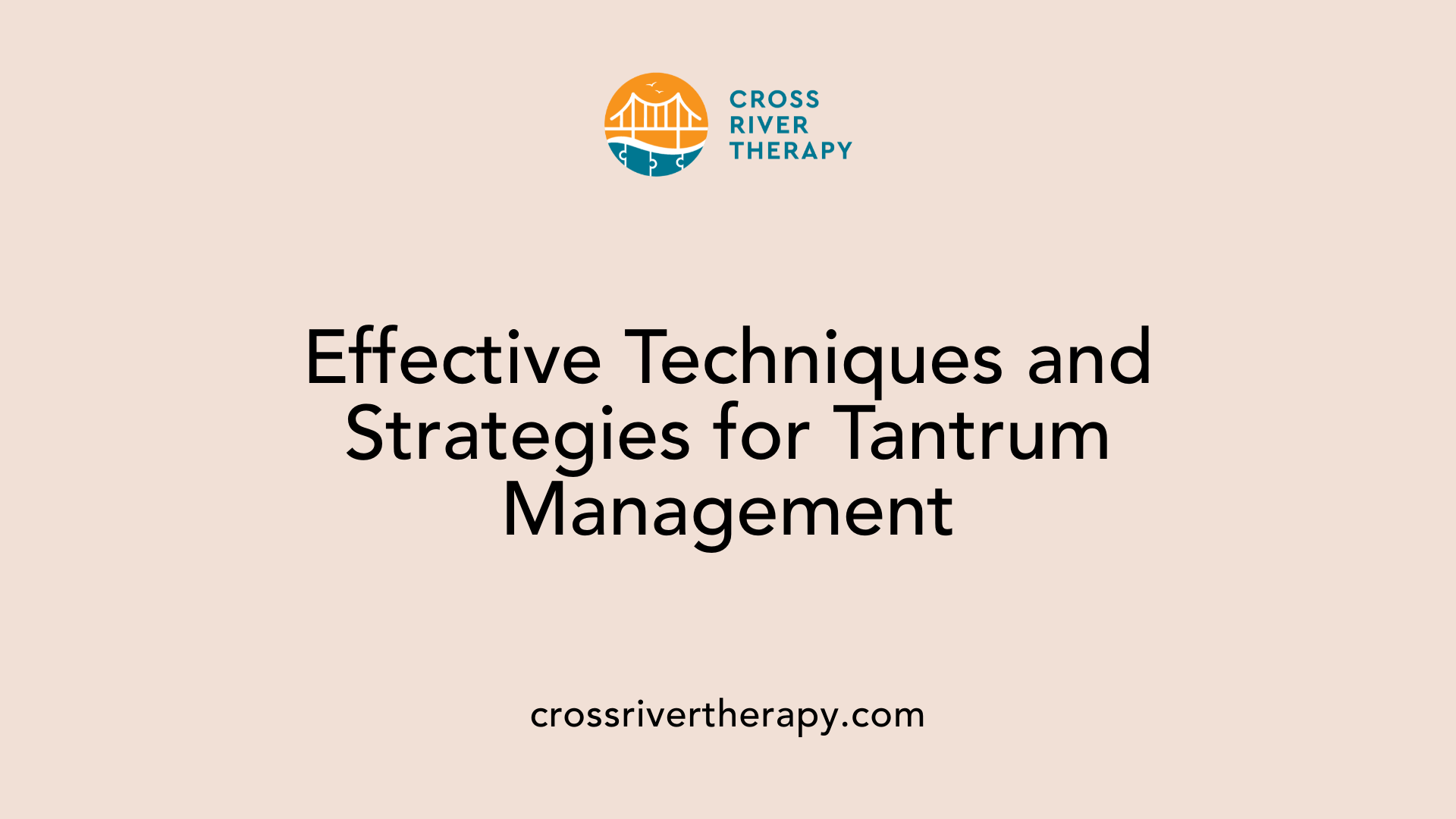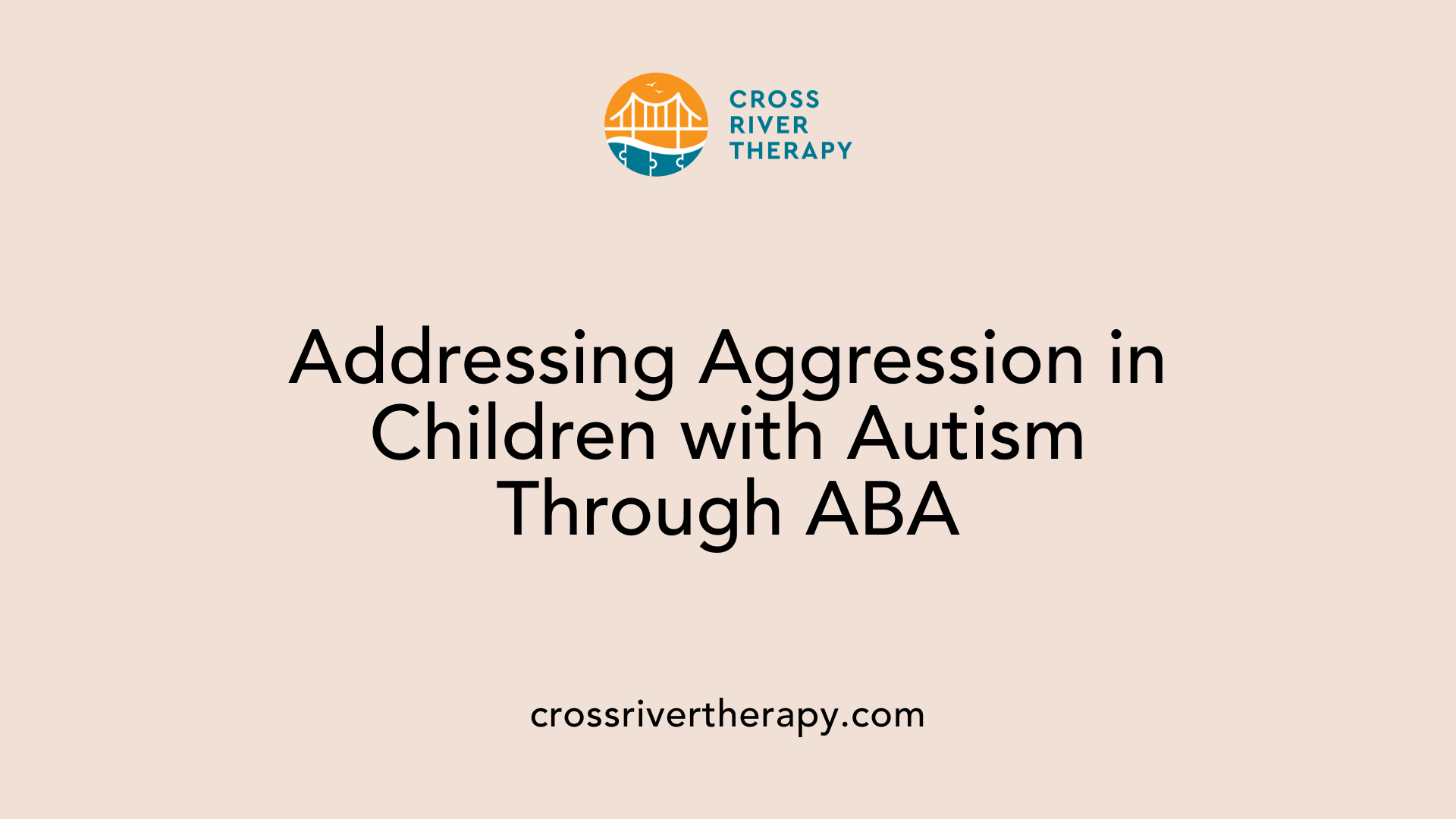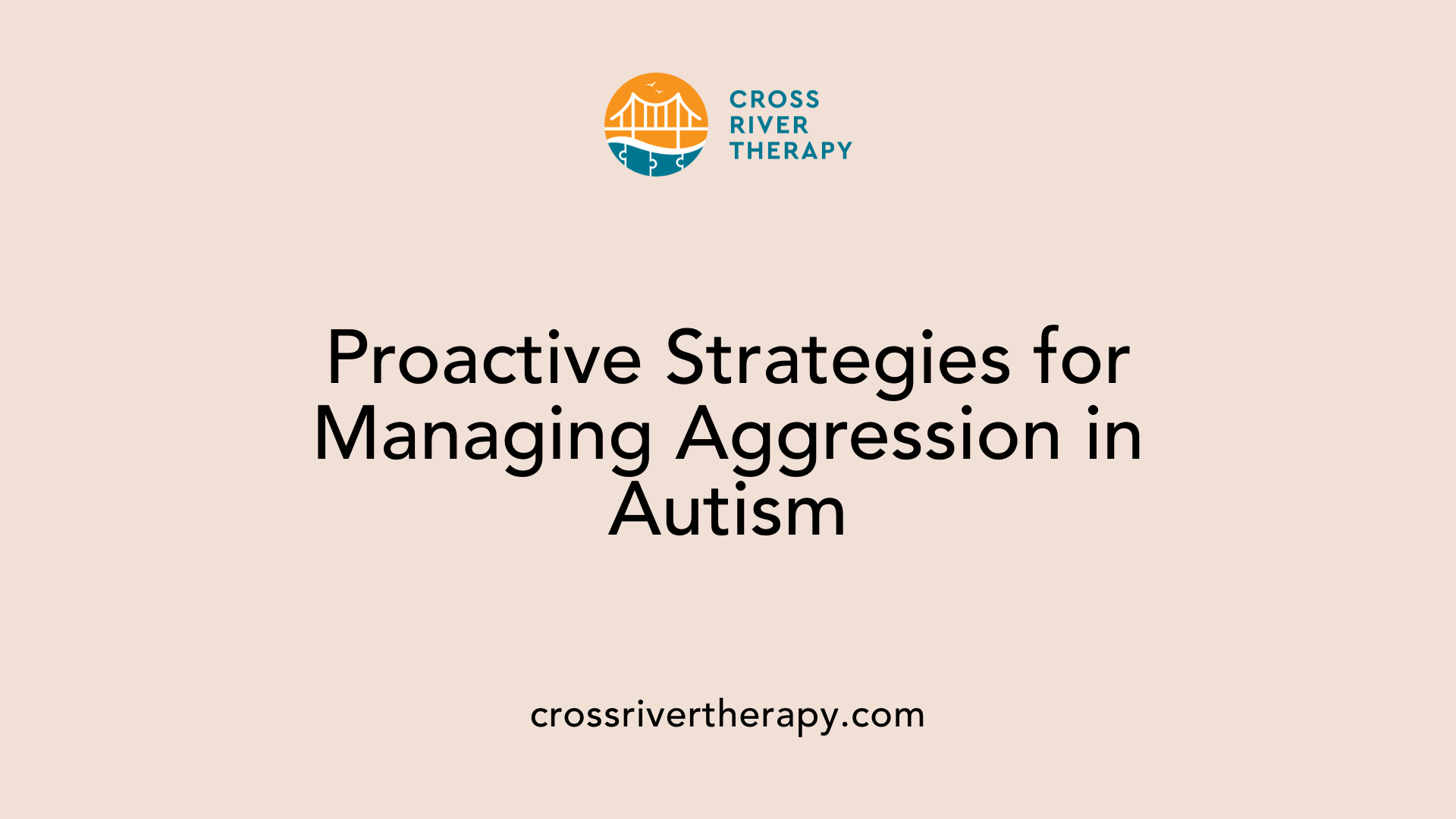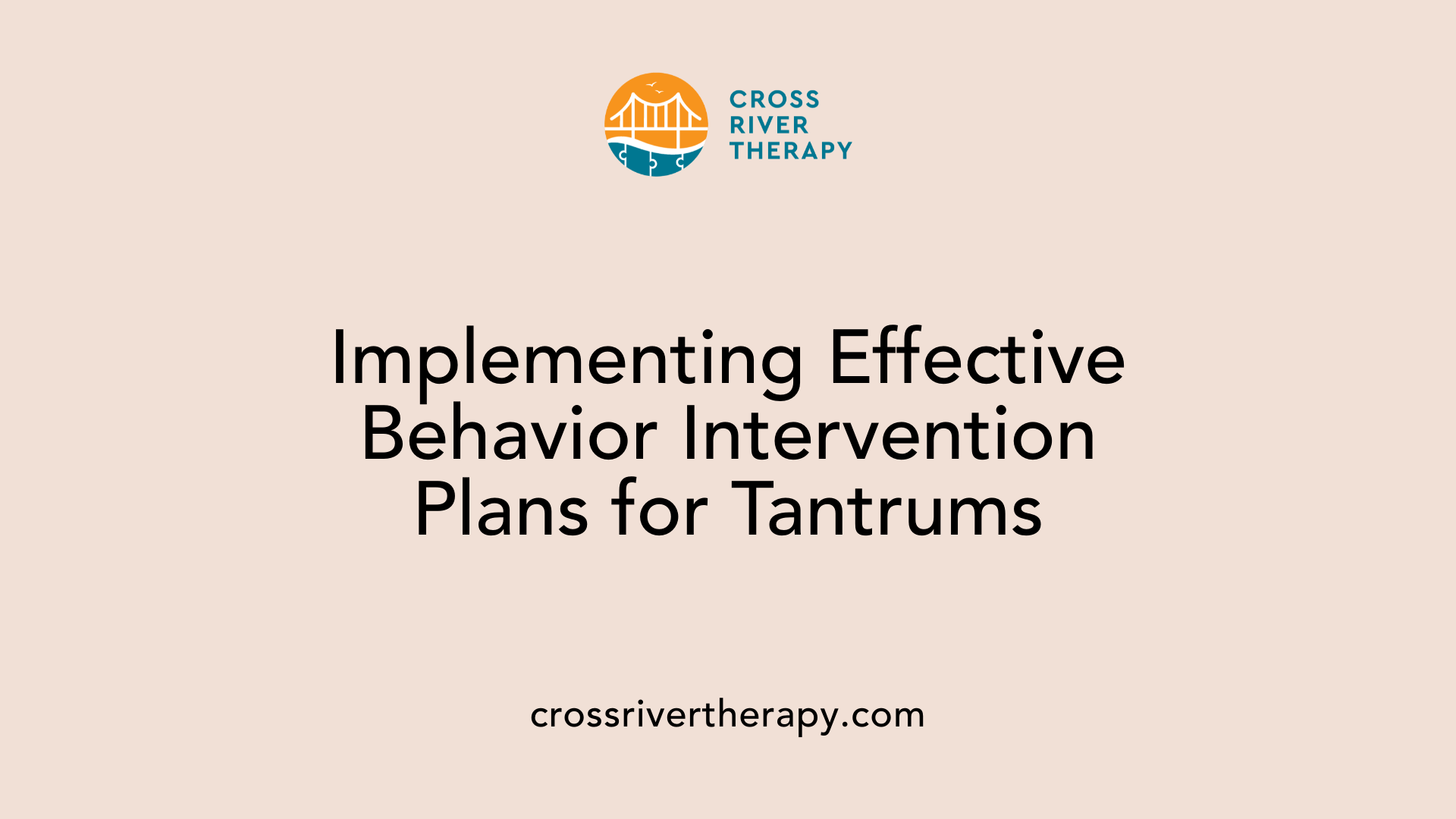How to Manage Tantrums and Aggression with ABA Therapy
Harnessing ABA Therapy to Tackle Tantrums and Aggressive Behaviors
Understanding the Challenge
Tantrums and aggression are commonly observed behaviors in children with autism, often rooted in difficulties with communication, sensory processing, or changes in routine. These behaviors, though challenging, are best approached with a strategic and understanding mindset. Applied Behavior Analysis (ABA) therapy offers effective techniques and comprehensive plans to manage and reduce these behaviors. Let's delve into how ABA therapy can transform tantrums and aggression into more manageable and constructive interactions.
ABA Therapy: A Structured Approach to Tantrums

How does ABA therapy approach managing tantrums?
ABA therapy offers a structured method for addressing tantrums in children with autism by treating them as a means of communication. It's often the case that these emotional outbursts stem from unmet needs or frustrations, making it essential to understand what drives them.
To effectively manage tantrums, therapists conduct a Functional Behavior Assessment (FBA). This comprehensive evaluation determines the triggers behind the tantrums, which can include sensory overload, communication hurdles, or a child's wish for attention.
What are the key interventions for positive behavior reinforcement?
Interventions within ABA focus on reinforcing positive behaviors while also teaching alternative communication methods. This dual approach enables children to express their needs more appropriately, thereby reducing the occurrence of tantrums caused by miscommunication.
Some effective strategies include:
- Positive Reinforcement: Rewarding desirable behaviors encourages their repetition.
- Choice Making: Empowering children by giving them options can reduce frustration.
- Visual Supports: Using items like visual schedules helps children understand what to expect.
How can a structured environment minimize tantrums?
Creating a structured environment is critical in helping manage tantrums effectively. Predictable routines provide a sense of security for children, which can significantly lower stress levels.
Organizing the child's environment involves:
- Removing Distractions: Ensuring a focused environment can prevent many triggering behaviors.
- Using Transition Objects: Unique items during transitions can make changes feel special rather than threatening.
- Frequent Breaks: Regular pauses during challenging activities help mitigate frustration and promote calmness.
Ultimately, the goal of ABA therapy is to reduce tantrums by addressing their underlying causes, thereby improving the child's ability to manage their emotions in a healthy way.
| Intervention Type | Description | Benefits |
|---|---|---|
| Positive Reinforcement | Rewarding desired behaviors | Encourages repetition of positive actions |
| Choice Making | Allowing children to make small choices | Provides a sense of control |
| Visual Supports | Using charts or schedules | Aids understanding and reduces anxiety |
| Structured Routines | Establishing predictable activities | Reduces stress and tantrum occurrence |
| Environmental Management | Adjusting surroundings to remove distractions | Prevents triggering behaviors |
| Frequent Breaks | Short pauses during tasks | Lessens frustration and enhances engagement |
This structured approach effectively minimizes tantrums and enhances communication, making it a vital component of ABA therapy.
Effective ABA Techniques for Tantrum Management

What are some effective ABA techniques and strategies for tantrums?
Managing tantrums in children with autism requires a thoughtful approach that incorporates strategies tailored to their unique needs. Effective techniques often center around de-escalation and emotional validation.
Understanding De-escalation Techniques
De-escalation refers to approaches that help reduce the intensity of a tantrum once it begins. These techniques can include:
- Calming Visuals: Employing visual aids or pictures that convey calmness to focus the child’s attention away from distressing stimuli.
- Reducing Stimulation: Lowering noise levels, dimming lights, or providing a quiet space can alleviate sensory overload, which is a common trigger for tantrums.
Implementing Calming Visuals and Reducing Stimuli
Children often benefit from structured environments. Using visual schedules can set clear expectations about activities, thereby reducing confusion. It is also helpful to incorporate picture boards that allow children to express choices or preferences clearly. Identifying and adjusting the environment minimizes distractions that may contribute to escalating situations.
Practices for Validating and Acknowledging Children's Emotions
Children must feel heard and understood during challenging moments. Some strategies include:
- Validating Feelings: Acknowledge the child’s emotions by using phrases like "I see you are upset," which can help them feel understood.
- Acknowledging Right to Refuse: When appropriate, allow children to refuse tasks or activities, reinforcing their sense of autonomy.
These techniques, informed by Applied Behavior Analysis (ABA), can empower caregivers and children alike and foster an environment where tantrums can be effectively managed.
Addressing and Reducing Aggression with ABA

How can aggressive behavior in children with autism be reduced using ABA therapy?
ABA therapy offers effective interventions for managing aggressive behavior in children with autism. By focusing on the antecedents of aggression, therapists can tailor strategies to the individual needs of each child. One approach involves redirecting attention towards appropriate activities to distract from frustration or aggression triggers.
In addition, teaching suitable methods of communication can significantly reduce aggression. Many children may struggle to express their needs verbally, leading to outbursts as a form of communication. By providing alternative ways for children to express themselves, such as using visual aids or sign language, caregivers can help mitigate misunderstanding and frustration.
Focusing on calmness and reducing sensory triggers
Creating a calm environment is crucial when dealing with potential triggers for aggressive behavior. Identifying sensory overload situations and preparing the child with calming devices, like noise-canceling headphones or stress toys, can be beneficial. Frequent breaks during challenging tasks can help manage frustration.
Maintaining a calm demeanor by caregivers is equally important. Children often pick up on their caregivers' emotional states; staying composed during episodes can prevent escalation. Involving parents and caregivers in the behavioral intervention plans enhances the effectiveness of these strategies, fostering a collaborative approach to managing aggression.
| Strategy | Description | Benefits |
|---|---|---|
| Redirecting Attention | Shift focus to preferred activities | Decreases the likelihood of aggressive outbursts |
| Teaching Communication | Use visual aids or sign language | Reduces frustration and fosters understanding |
| Environmental Adjustments | Use calming devices and sensory toys | Creates a more supportive atmosphere |
| Caregiver Calmness | Maintain composure during episodes | Prevents further escalation of aggression |
Proactive Management of Aggression in Autism

What strategies does ABA offer for managing aggressive behavior in autism?
Applied Behavior Analysis (ABA) provides a structured framework for managing aggressive behavior in children with autism. Among the most effective strategies is the significance of maintaining calmness during these episodes. Caregivers are encouraged to remain composed, as their emotional state can greatly influence the child’s behavior. This modeling of calmness offers children a stable reference point as they navigate their emotions.
Communicating effectively is another crucial component. Caregivers should limit verbal demands to clear, concise phrases. This simplification helps the child process information without becoming overwhelmed, reducing the likelihood of aggression.
Creating a supportive environment is equally important. This can involve removing potential hazards and ensuring the environment is free from distractions that may trigger sensory sensitivities. Redirecting the child towards positive activities or interests can keep them engaged and manage frustration levels.
Understanding the underlying triggers of aggression is vital. Many aggressive behaviors can stem from communication difficulties or sensory overload. By identifying these triggers, tailored interventions can be developed. For example, incorporating stimming activities, which the child may find soothing, can serve as an effective coping mechanism, helping to minimize aggressive outbursts.
The proactive approach delivered by ABA emphasizes the development of a safe and predictable environment, allowing children to express their needs more appropriately and manage their emotions more effectively.
Strategies and Interventions for Aggression Control
What are some consequence strategies and replacement behaviors in ABA for managing aggression?
To effectively manage aggression in children with autism, ABA techniques implement a range of consequence strategies and replacement behaviors. One vital strategy is extinction, where reinforcement for aggressive behaviors is halted. This approach aims to reduce aggression by removing any rewards that previously supported aggressive actions.
Differential Reinforcement of Alternative Behavior (DRA) is another effective method. This strategy encourages the child to engage in positive behaviors rather than resorting to aggression. For instance, if a child usually hits when frustrated, they might be taught to use words or gestures to express their feelings instead.
Token economies also serve as a productive method. This system allows children to earn points or tokens for displaying desirable behaviors, which they can later exchange for rewards. It creates motivation to choose appropriate actions over aggressive responses.
Noncontingent reinforcement is another helpful tactic. By consistently providing desirable reinforcers at set intervals—regardless of the child’s behavior—it ensures that their needs are met, which can significantly reduce instances of aggression caused by frustration or unmet needs.
Finally, neutral redirection helps in managing aggressive behaviors by gently guiding the child toward acceptable tasks or activities without reinforcing negative actions. Overall, these ABA strategies focus on promoting desirable behaviors while minimizing the reinforcement of aggression, helping create a more positive environment for the child.
Implementing Behavior Intervention Plans for Tantrums

Understanding antecedents and triggers
Identifying antecedents is crucial in managing tantrums in children with autism. Common triggers include communication difficulties, sensory overload, and changes in routine. By recognizing these triggers, caregivers can develop effective Behavior Intervention Plans (BIPs) that aim to prevent tantrums before they start. For instance, if overstimulation in a crowded setting triggers a child’s tantrum, strategies can be implemented to create a more calming environment.
Utilizing choice boards and reward systems
A valuable component of BIPs is the use of choice boards. These tools empower children by allowing them to make decisions, increasing their sense of control. Alongside this, implementing reward systems helps reinforce desired behaviors. Rewards can range from verbal praise to tangible items, such as stickers, and they encourage children to practice their skills in managing emotions effectively.
Teaching replacement behaviors
Teaching replacement behaviors is essential in helping children express their needs without resorting to tantrums. Examples include coaching them on how to request a break or vocalize feelings. During tantrums, in-the-moment strategies like deep breathing exercises or providing sensory items can further assist in calming the child. Effective BIPs should remain flexible, data-driven, and tailored to each child's specific needs.
Towards Effective Behavioral Management
Addressing tantrums and aggression through ABA therapy involves a multi-faceted approach that takes into account the individual triggers and needs of each child. By applying structured techniques, understanding the antecedents, and promoting communication and positive behaviors, caregivers can significantly improve behavioral outcomes for children with autism. Progress in managing these challenging behaviors opens doors to a more harmonious and understanding interaction, paving the way towards better emotional regulation and social engagement.
References
- 9 Ways ABA Therapy Techniques Can Help Manage Your Child's ...
- Tips For Managing Tantrums for Your Child With Autism
- ABA Therapy Tactics for Managing Aggression in Autistic Children
- What Are ABA Interventions for Tantrums?
- Managing Autism Meltdowns, Tantrums and Aggression
- Aggressive behaviour: autistic children and teenagers
- Stimming: autistic children and teenagers - Raising Children Network
- How to Deal with Tantrums in ABA Therapy: Effective Strategies
- Effective ABA Strategies for Dealing with Tantrums



